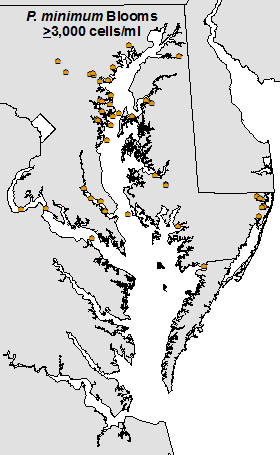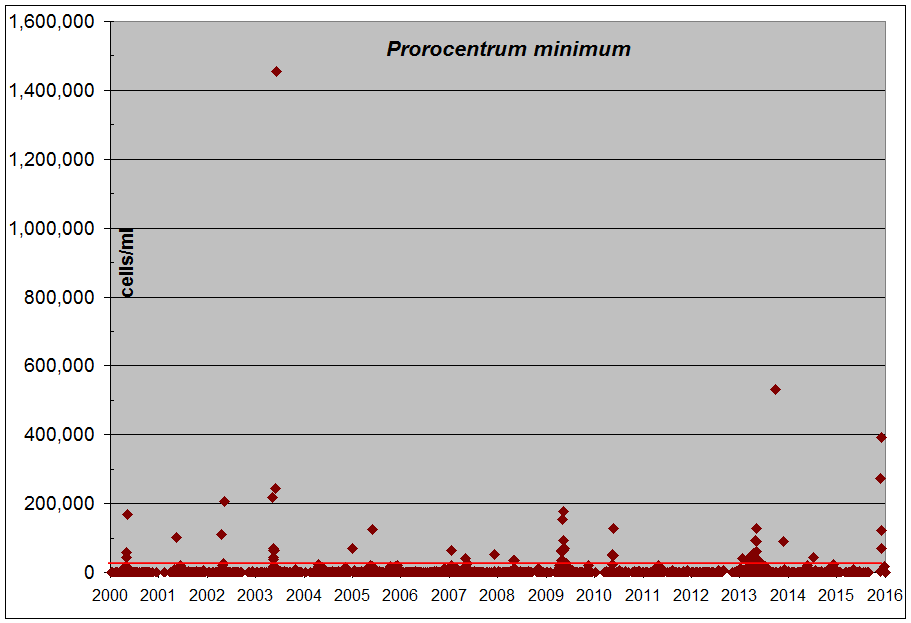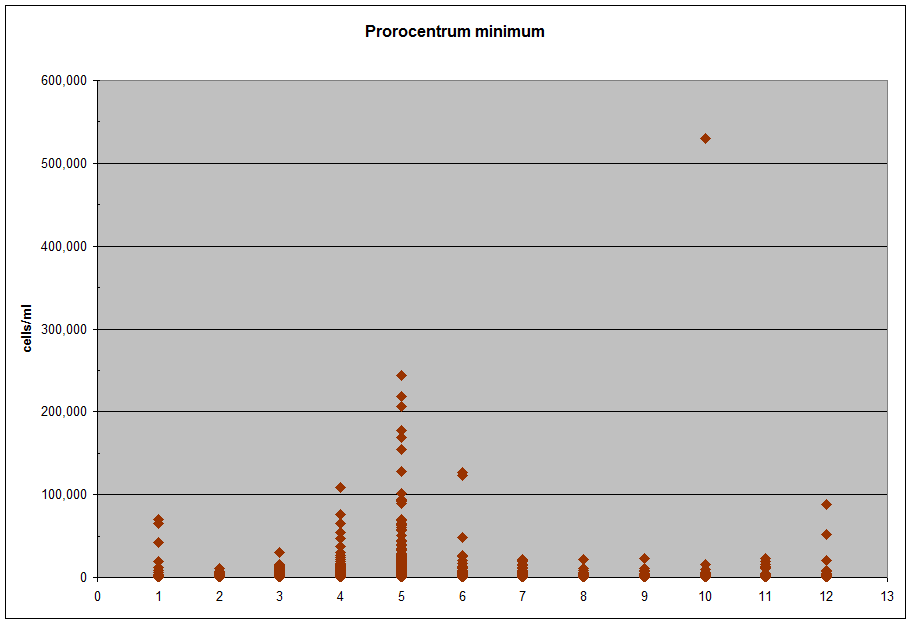Mahogany Tide
High density blooms of dinoflagellates such as Prorocentrum minimum may cause water to become discolored a reddish-brown and form Mahogany tides. The high biomass of Prorocentrum in blooms may severely reduce the amount of oxygen available to living resources at localized bloom sites. The result can be local fish kills, invertebrate kills and loss of habitat causing fish to move from the area due to low oxygen or irritation from the high cell densities. All these effects may produce local changes in the dynamics of the food web.
Prorocentrum blooms occur each spring in the mid-salinity waters of the Chesapeake Bay at varying intensities. It is believed the cells are typically delivered to the upper Chesapeake Bay in spring by traveling in the up-bay moving, higher salinity bottom waters from the lower Bay. As waters mix and upwell in the mid and upper Bay, cells are delivered to nutrient and light rich surface waters and commonly result in areas of Mahogany tides. Although the blooms are usually most intense during the spring, they have occurred in almost every month of the year. Prorocentrum has also been identified in Maryland’s Coastal Bays.
World-wide, the species is considered potentially toxic to humans with rare cases of Venerupin Shellfish Poisoning (VSP) recorded in the last century. No such cases of shellfish poisoning from Prorocentrum have been reported from Maryland waters.

Distribution of Prorocentrum minimum blooms in MD (2000-2013)
 Annual occurence of P. minimum in MD (2000-2015)
Annual occurence of P. minimum in MD (2000-2015)
 Monthly occurence of P.min in MD (2000-2015)
Monthly occurence of P.min in MD (2000-2015)